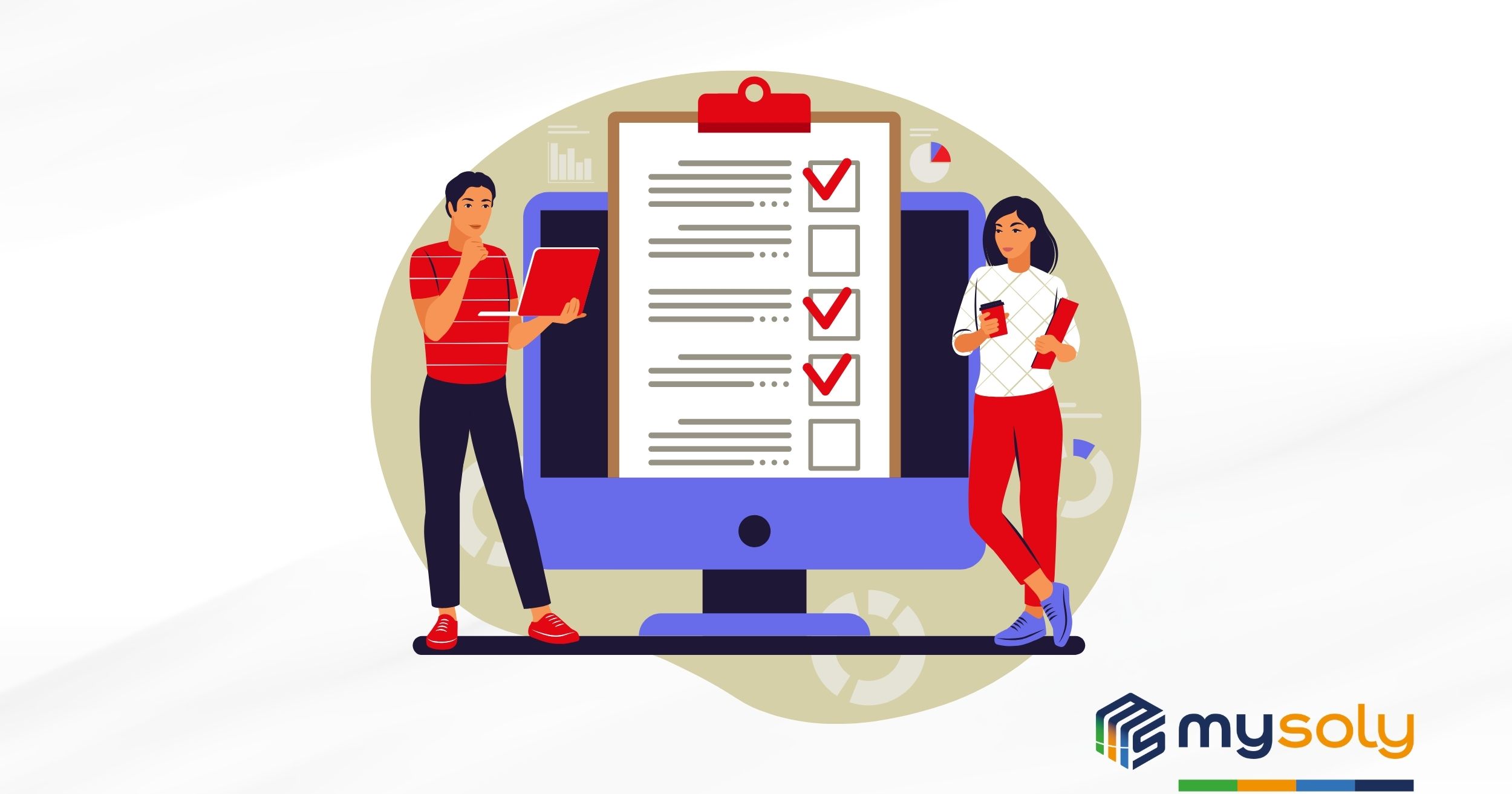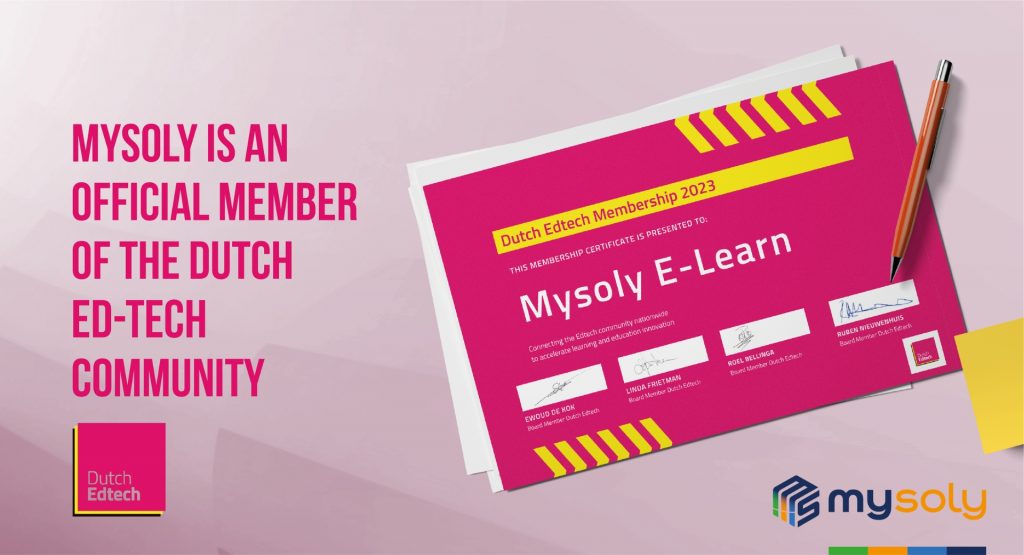7LMS v1.1.0: Enhance Learning with Integrated Surveys Feature
Introduction
At Mysoly, we continuously improve our Learning Management System (7LMS) by adding new features. Our goal is to make learning more efficient and interactive. With the release of 7LMS v1.1.0, we introduce the Integrated Survey Feature.
This powerful tool allows organizations to collect feedback from learners and educators. So, organizations can analyze and enhance training programs effectively. Also, surveys help measure learning progress, evaluate course effectiveness, and understand user satisfaction.
The Integrated Survey Feature in 7LMS consists of three key steps:
- Creating a survey – Design surveys easily with a user-friendly interface.
- Publishing the survey – Choose from Public, Private, or Limited access options.
- Analyzing results – Gain insights with detailed reports and visualized statistics.
In this blog, we will guide you step by step on how to use the Integrated Survey Feature. Screenshots will illustrate the process clearly.
Table of Contents
How to create a survey?
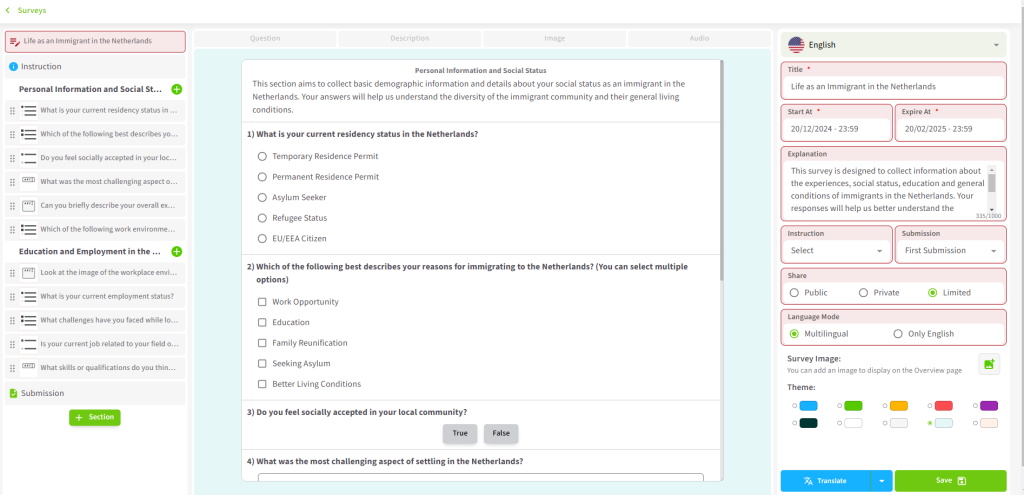
Figure 1 : Survey creation page
The survey creation page consists of three main sections to simplify survey design:
- Left Panel: Lists sections and questions within the survey. Here, you can add or remove sections and questions. You can also modify question types.
- Center Panel: Displays the created questions. This panel includes question text and answer choices.
- Right Panel: Contains general survey settings. You can configure:
- Title and explanation texts
- Start and expiration dates
- Survey access mode (Share Mode: Public, Private, Limited)
- Language options
- Theme color
- Instructions and submission settings
- Question titles, descriptions, and answer choices
- Image, audio, and TTS (Text to Speech) for questions
If Language Mode is set to “Multilingual,” the survey title, explanation, questions, options, and speech content can be created in multiple languages.
Preparing Questions for the Survey
The left panel lists and manages survey questions. Here, you can:
- Click the + button to add a new question.
- Use the Section button to group questions by topic.
- Reorder, duplicate, or delete questions.
Clicking the + button opens a selection of question types:
- Basic Single Choice: Allows participants to select only one answer.
- Basic Multiple Choice: Allows participants to select multiple answers.
- Standard Likert Choice: Uses a scale (e.g., 1-10) for ratings.
- True-False Choice: Presents a True/False format.
- Open-Text Short: Requires a short text response (255-character limit).
- Open-Text Long: Requires a detailed text response (1,000-character limit).
Editing Question Content
Once a question type is selected, the tabs at the top of the center panel (Question, Description, Image, Audio) become active. Selecting a tab displays related settings in the right panel. By default, the Question tab is selected, allowing you to start editing immediately.
- Question Tab: Includes the question text, answer choices, and optional images for each choice.
- Description Tab: Allows adding additional explanations.
- Image Tab: Enables uploading an image related to the question.
- Audio Tab: Allows adding audio explanations for questions.
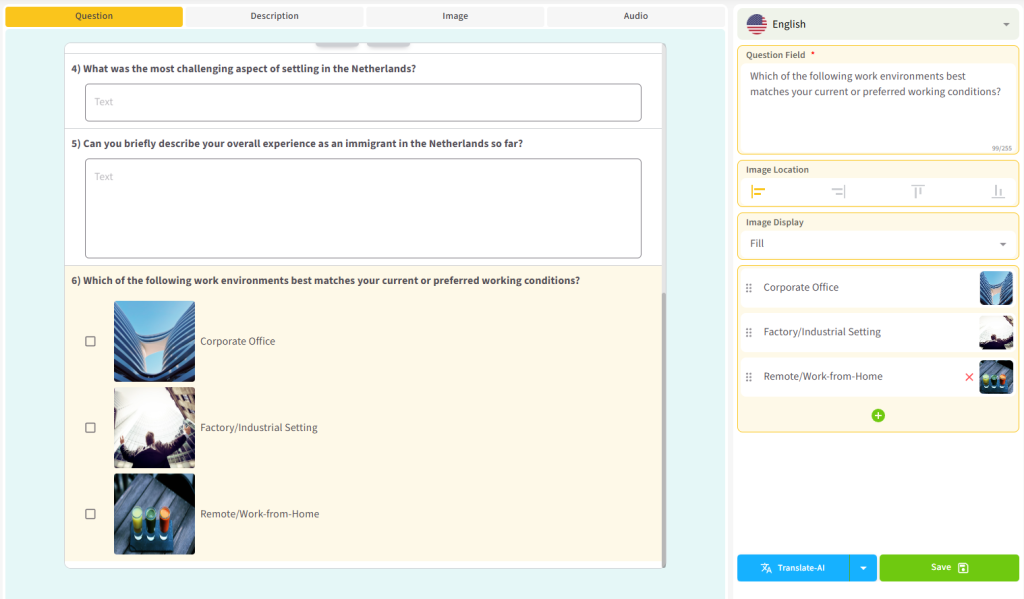
Figure 2 : Multiple Choice Question example
Multilingual Support
If Multilingual Mode is enabled, all text, including questions, descriptions, and options, can be translated into different languages. 7LMS offers two translation options:
- Translate: Standard automated translation.
- Translate-AI: AI-powered translation that ensures a more natural and contextually accurate result.
Adding Instructions and Submissions to Surveys
The right panel includes Instruction and Submission options. When selected, a list of previously created instructions and submissions is displayed. Users can choose and add them to their surveys.
Instruction and submission templates support multiple languages. To prevent redundant content creation for each survey, templates are stored in a centralized library. Users can select from these pre-existing templates, ensuring faster and more consistent survey processes.
With the Integrated Survey Feature, organizations can design surveys efficiently, gather valuable insights, and improve learning outcomes.
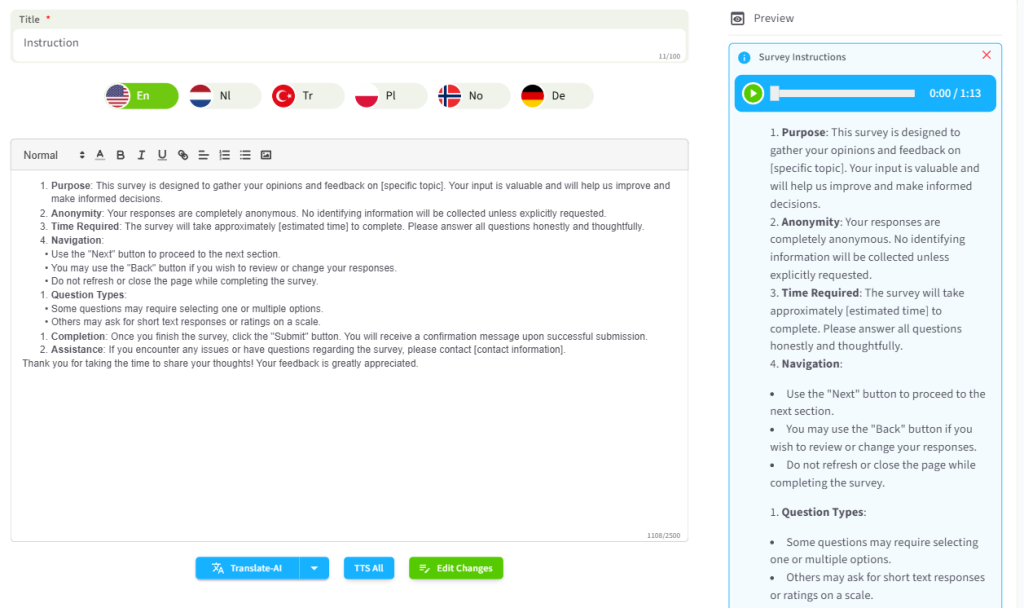
Figure 3 : Instruction creation page
How to save and publish a Survey?
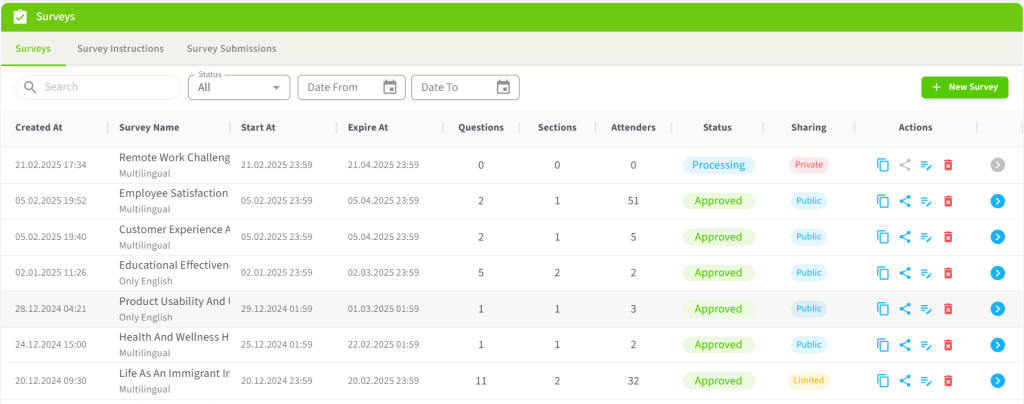
Figure 4 : Survey list page
Once all the questions have been prepared, clicking the Save button will save the survey. Additionally, edits can be made later from the same page.
All saved surveys are listed on the Surveys page. However, an additional step is required to publish a survey. The survey’s status must be changed from Processing to Approved:
- Processing: A draft stage where edits can still be made and the survey has not been published yet.
- Approved: Indicates that the survey is ready for publication and, if within the specified date range, is accessible to participants.
Survey Sharing Modes
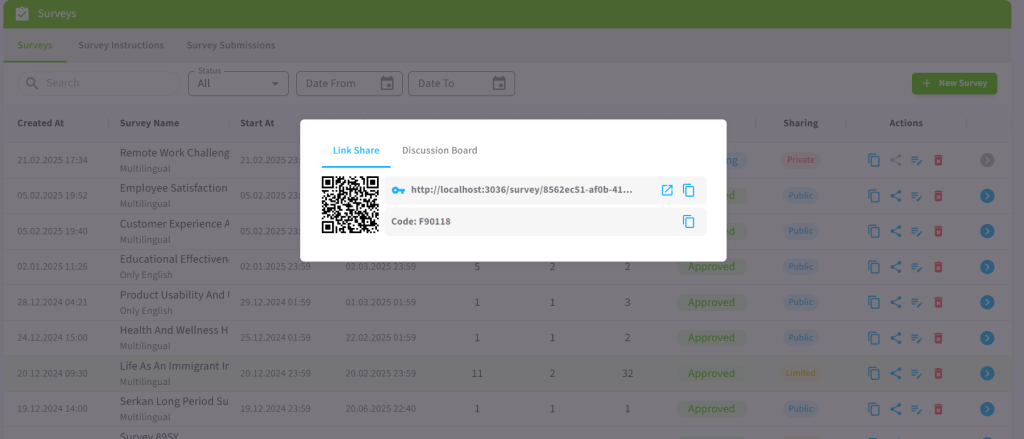
Figure 5 : Survey Share Popup
There are three different sharing modes available for survey access:
- Public Mode: Open to everyone without requiring login.
- Private Mode: Only accessible to logged-in users.
- Limited Mode: Access is granted via a special code provided to specific users.
Once a survey is set to Approved, an access link is generated. If Limited Mode is selected, an additional access code is created. Users can reach the survey page using this link.
How to access Survey page?
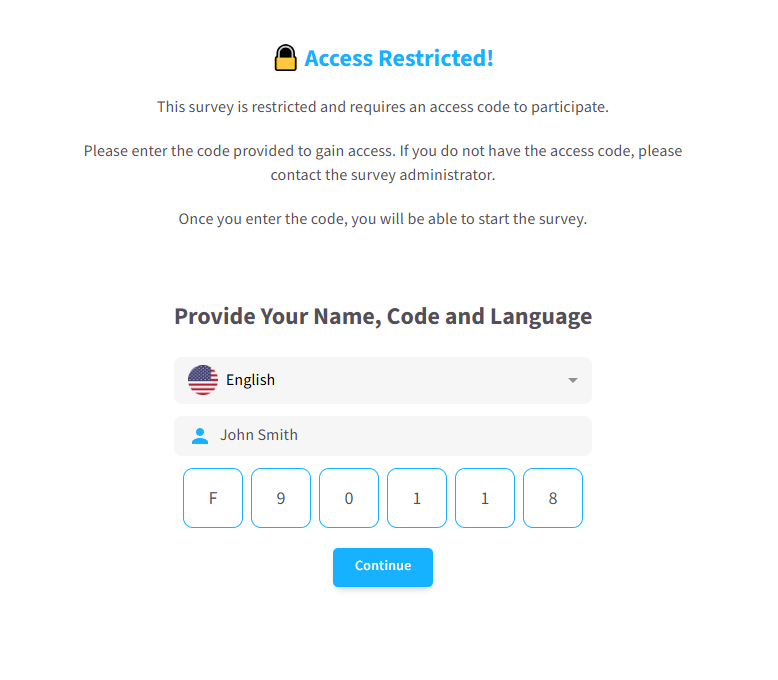
Figure 6 : Access Page (limited mode)
In Public and Limited modes, users must enter their name and select a language (if Multilingual Mode is enabled) when they access the survey page. In Limited Mode, they must also enter an access code. Once they provide the required details, they can start the survey.
In Private Mode, the system automatically detects the user’s name and language since they are logged in. This allows them to access the survey directly without entering additional information.
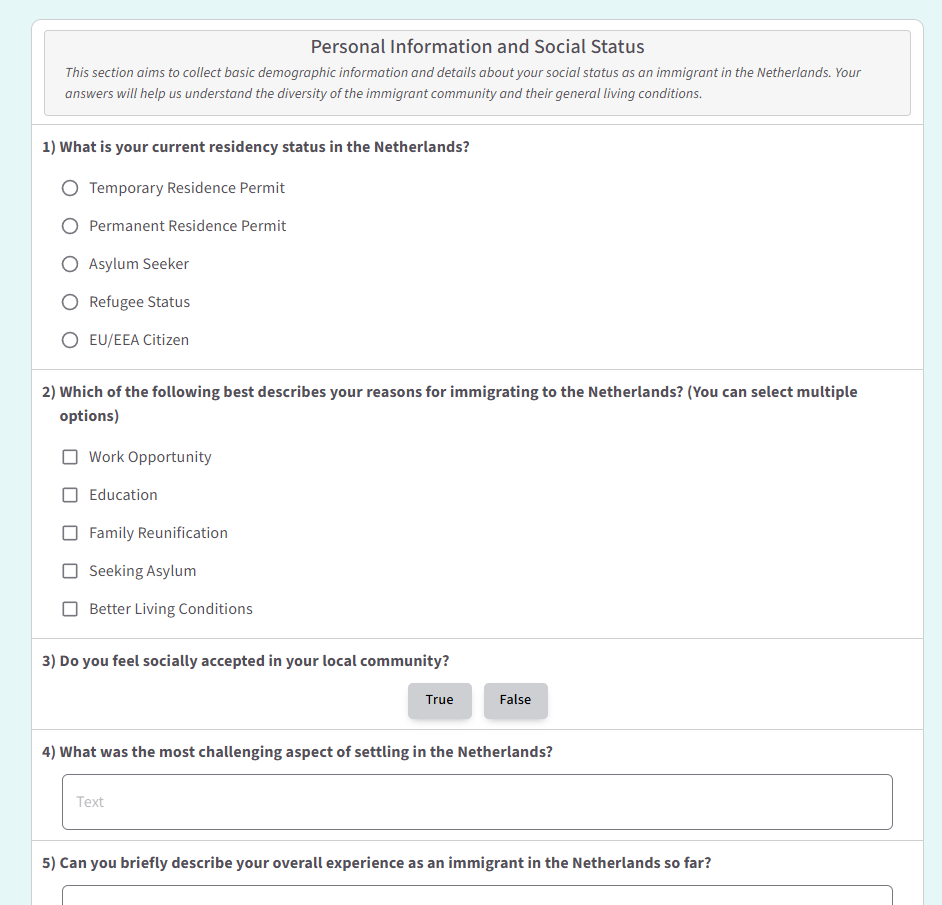
Figure 7 : Survey solving page
How to analyze the Survey results?
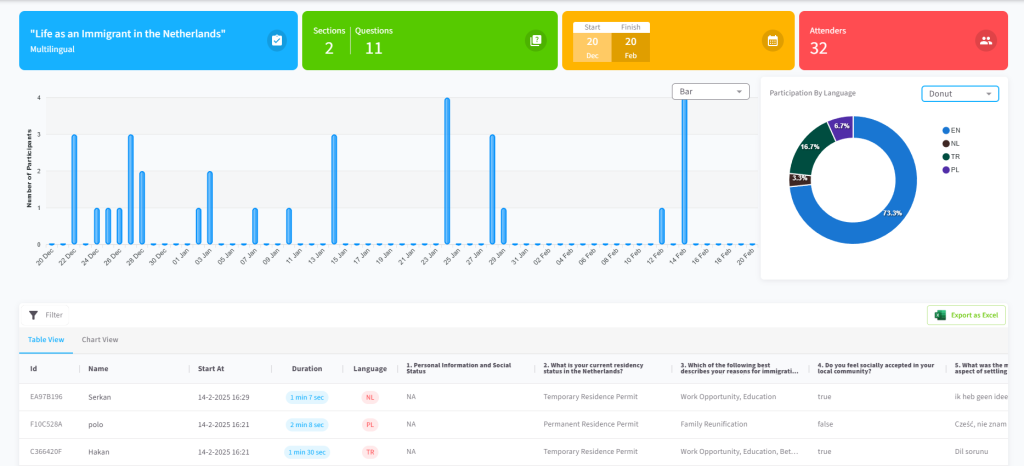
Figure 8 : Dashboard panel
The Survey Dashboard, accessible only to authorized users, provides a detailed overview of survey results. At the top, users can view essential details like the number of sections and questions, start and end dates, and participant count.
Participation and Language Distribution
Below the survey details, the Number of Participants section visualizes daily responses using bar and line charts. Next to these charts, a breakdown shows the survey’s completion rate and participant count by language. The dashboard offers different chart types to display data in various formats.
Data Views: Table & Chart
The dashboard includes two sections for in-depth analysis:
- Table View: Displays participant-specific details, including participation date, time spent, selected language, and responses. Users can export this data in Excel format.
- Chart View: Presents question-based insights, showing response distributions with visual charts. Users can analyze percentage values and numerical data and export findings in PDF format.
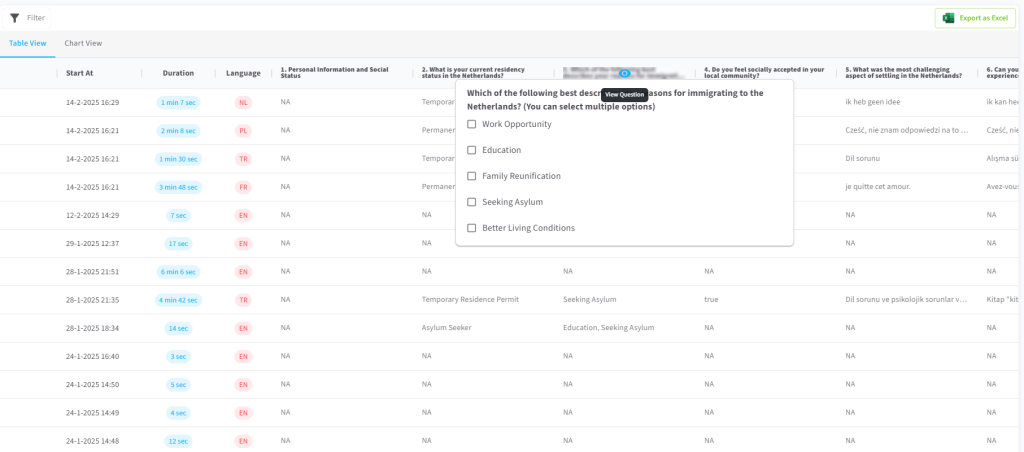
Figure 9 : Table View
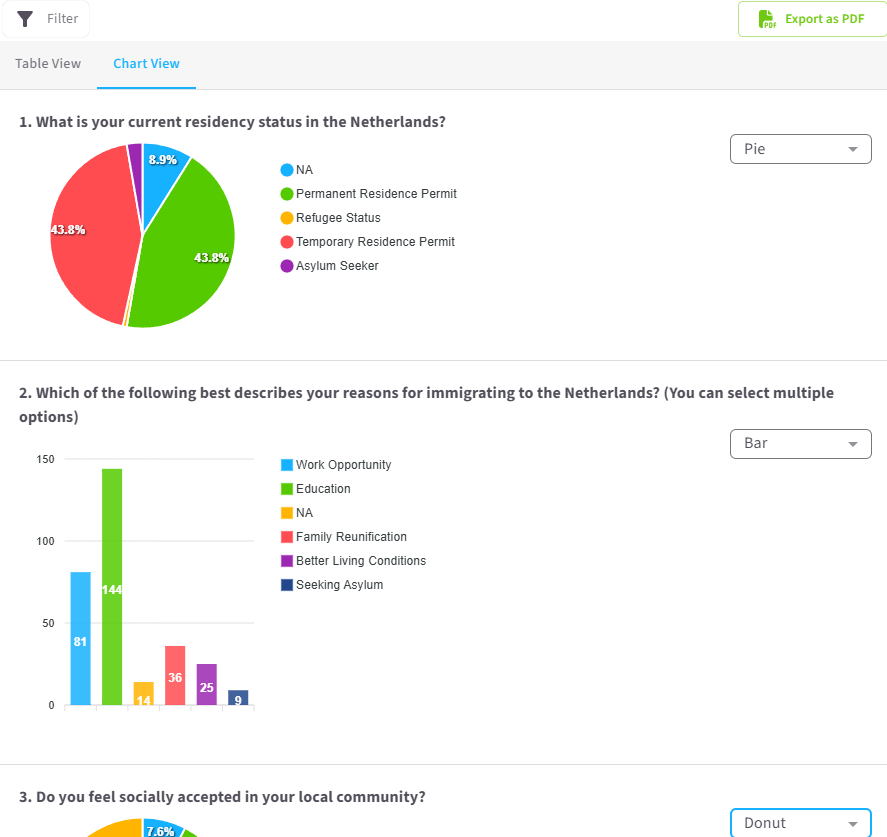
Figure 10 : Chart View
Filtering and Data Export
Users can apply various filters to refine the displayed data. The system also supports Missing Data Format and Answer Display Format, ensuring compatibility with statistical tools like SPSS.
Use cases
The survey module, designed for 7LMS, extends beyond e-learning and works across multiple industries. Some key applications include:
- Education: Schools and universities can use surveys to gather student and teacher feedback, assess course effectiveness, and analyze academic performance.
- Employee Engagement: Companies can conduct employee satisfaction surveys to evaluate workplace conditions, collect feedback, and enhance communication.
- Business & Customer Insights: Organizations can leverage surveys for performance assessments, customer satisfaction analysis, and product feedback.
Conclusion
Surveys are powerful tools for gathering insights and making informed decisions. A well-structured survey system helps businesses, educators, and institutions optimize their processes.
The 7LMS survey module offers a user-friendly interface, multilingual support, and flexible sharing options, making it a versatile solution for various industries. We continuously enhance the system based on user feedback, ensuring seamless data collection and analysis.
This dynamic module prioritizes efficiency, adaptability, and user experience, evolving to meet diverse needs.
At Mysoly, we specialize in AI-powered multilingual learning solutions that support organizations in education, workforce development, and integration processes. Our technology breaks language barriers and ensures inclusive, efficient, and data-driven learning experiences.
To learn more about how Mysoly’s AI-driven solutions can support your organization, get in touch with us today.

